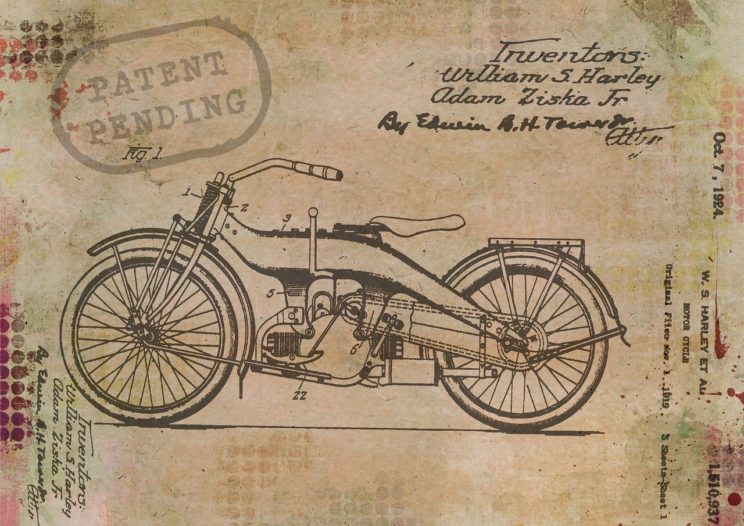USPTO Patent Filing and Registration Process
Understanding how to patent your creations is crucial because patents protect your ideas from others imitating and profiting off of your original work. The only downside to patenting your work is that the process of registering for a patent is arduous. Taking your idea from conception to patent requires a huge investment of time and energy to research and submit all of the necessary materials. However, to begin the process in the first place, you must first know what exactly a patent entails.
What is a Patent?
Put simply, a patent is a grant issued by the U.S. government which gives the creator or inventor the right to prevent all others from producing, utilizing, or selling their invention. In order to acquire a patent, either the inventor or the business for which the invention was produced must file a patent application with the U.S. Patent and Trademark Office, or USPTO for short. The exact cost of the filing fees varies depending on the type of patent application. But even before thinking of filing a patent with the USPTO, you should research already existing patents at the Trademark Depository Library and the California State Library Patent to determine whether your invention is already patented.
Patents Applications Differ Between Types of Patents
If the invention is not patented, your next move should be to determine which type of application to file for your creation. There are three types of patents available and they are:
- Design Patents: these protect ornamental designs and patterns and are effective for up to 14 years.
- Utility Patents: these protect useful processes, contraptions, articles of manufacture, compositional elements, and improvements to any of these for up to 20 years.
- Plant Patents: These protect new varieties of asexually reproduced plants and are effective for up to 20 years as well.
Prototyping an Invention
While each of the aforementioned types of patents have their distinct uses, unless your innovation has to do with plants or ornamental designs, you will most likely end up filing for a utility patent as that is by far the most common type of patent to apply for. It’s also extremely beneficial for you to keep an accurate record of how you came up with the idea of your invention along with an outline of the step by step process. Those pieces of evidence will prove invaluable during the patent application process. Further, if you happen to have a prototype of your invention on hand, then you should also submit that along with the other records.
Here’s An Idea…Can I Patent An Idea?
This is where it gets a bit murky, but technically, no. Ideas by themselves cannot be patented. You can only patent an invention or creation that was developed from an idea. The invention must be produced or a description of the creation must be included with your patent application for the consideration to hold any weight. It also goes without saying that in order to file for a patent, you must be the original inventor or creator, or have been assigned the invention by another person or serve as the legal representative of the original inventor.
Ultimately, you may patent inventions, designs, and even plants so long as your inventions is:
- New, as in it is novel and hasn’t been patented before
- Non-Obvious, as in it isn’t something someone else can easily think of
- Useful, as in the idea can be put to practical use through its implementation.
How Our Los Angeles Patent Registration Attorney Can Help
In order to obtain the actual patent that protects your invention or design, you need to file a non-provisional application, known as a Regular Patent Application (RPA). To get this patent approved, you will have to submit an application that demonstrates how to make and use the invention, why it is different from all other inventions, and describe what exact aspects of the invention or design should be patented.
That process will require many hours of research and preparation in order to avoid having your application delayed or outright denied, both of which would significantly impede your chances of protecting your creation. We can help you to ensure your patent application has all of the necessary elements to get your creations under protection as quickly as possible. At KAASS LAW, we value originality and individuality above all else and we invite you to contact our firm to see just how easy we can make obtaining your patents and protections for your inventions and designs. Give us a toll free call at (310) 943-1171 to speak to our Trademark and Patent lawyers today. Our lawyers in Glendale, Los Angeles, CA, are fully dedicated to help you with any legal matters you may need assistance with.
(310) 943-1171
KAASS LAW is authorized to practice law in California. The above content is intended for California residents only. This content provides only general information which may or may not reflect current legal developments. KAASS LAW expressly disclaims all liability in respect to actions taken or not taken based on any of the contents of this website. The above content DOES NOT create an attorney-client relationship. KAASS LAW does not represent you unless you have expressly retained KAASS LAW in person at the KAASS LAW office.
KAASS LAW helps clients in: Los Angeles, Burbank, Hollywood, Glendale, Van Nuys, North Hollywood, Studio City, Highland Park, Eagle Rock, Sunland, Tujunga, Sylmar, San Bernardino, La Crescenta, La Canada, Beverly Hills, Westwood, Santa Monica, Brentwood. Pacoima, Montebello, Commerce, Alhambra, Downey, Bell, Maywood, Walnut Park, Vernon, Lynwood, Echo Park, Silverlake, Mission Hills, Northridge, Woodland Hills, Encino, Canoga Park, North Hills, Porter Ranch, Chatsworth, Reseda.


Pingback:Protection From Copyright Infringement | KAASS LAW